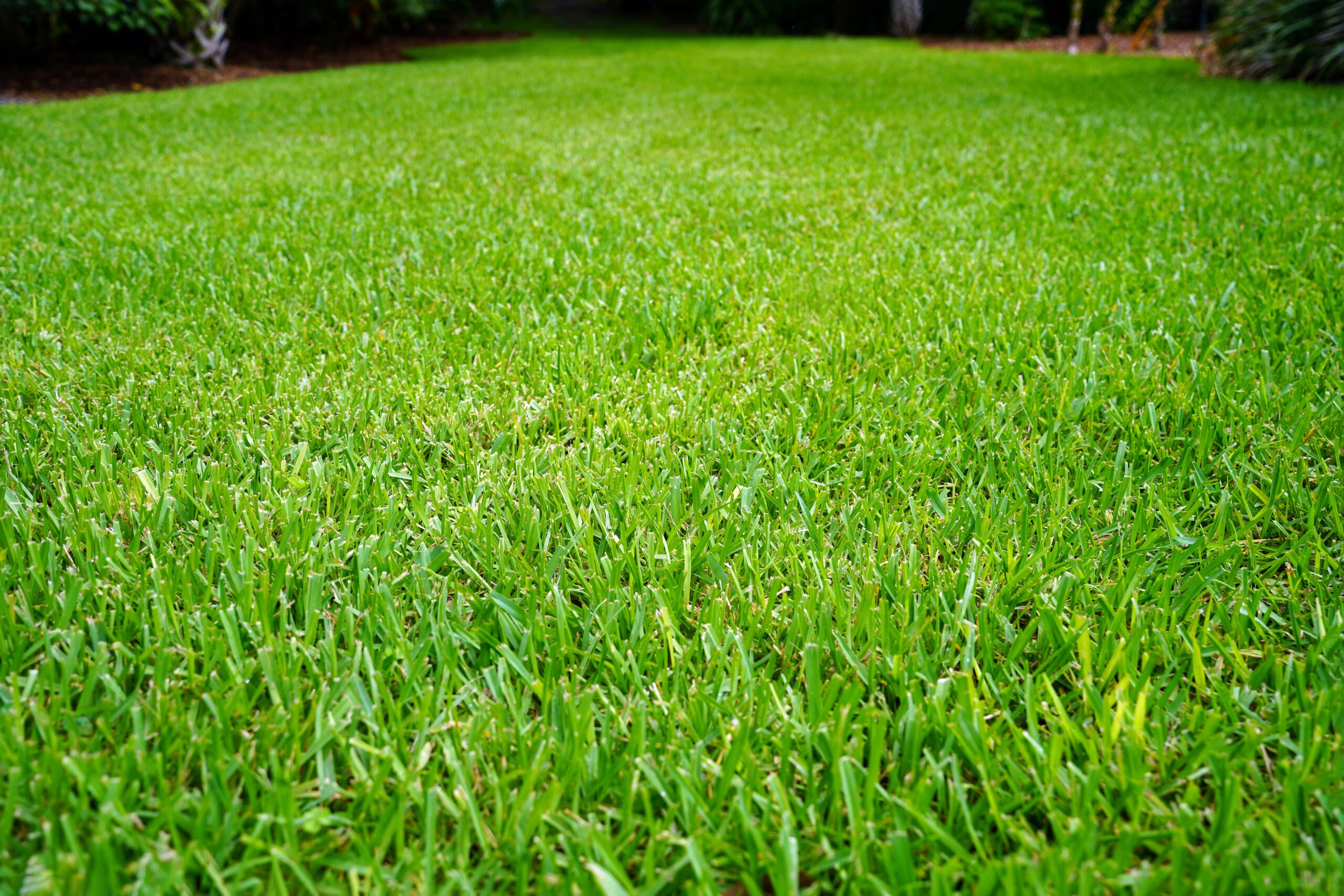St. Augustine grass is the most widely planted grass type in South Florida. When properly cared for this grass has a lush green or greenish-blue appearance. A few of the reasons why it is the go-to grass for most properties here in South Florida is due to its shade, salt, heat, and moderate drought resistance. This grass does experience problematic issues though, it will struggle in soil that is being overwatered and also in areas that have extended periods of cold weather. That being said as a warm season turfgrass, St. Augustine is one of the best options available for lawns in South Florida and can be a great addition to a homeowner’s property.
As previously mentioned, this grass can run into issues if not properly cared for. Here are some tips for caring for a St. Augustine lawn.
- Clean all lawn equipment with prior to landscaping your property. Disease, weeds, and insects are easily transmitted
- Sharpen your lawn mower blades after about 25 hours of use (approximately twice a year for homeowners). Torn grass instead of it being sliced is more susceptible to disease, sun damage and insects.
- Do not mow the lawn to short (scalping). When mowing a St. Augustine lawn, we recommend to never try to remove more than 1/3 of the blade in a cutting. Any more than this and the lawn will be put under unnecessary stress. Optimal height for St. Augustine grass is 2.5 to 4 inches tall. (Cultivars* Seville, Jade, Palmetto, and Delmar should be mowed to 3 inches). If you do happen to miss a cut, bring the height back down slowly.
- Do not mow the lawn when it is wet. This is an easy way for fungus to appear in the lawn and also an easy way to clog the mower.
- Leave the grass clippings on the lawn after mowing. Leave the grass clippings on your lawn after mowing, this will reduce your lawns fertilizer needs and also add nutrients back into the lawn. We recommend setting your lawn mower to the mulching setting and using a leaf blower to spread the grass out if it begins to clump on the lawn.
- Properly water your lawn. Less and more is more, confusing right? Less frequent, longer irrigations will help establish a deeper root system for a healthy lawn. Lawns that are frequently watered tend to have a shallow root system and are more likely to experience issues when droughts occur. We recommend only watering a lawn with 1/2 to 3/4 inches of water per irrigation, sandy soils may need more. Also, only water when the lawn is starting to show signs of wilt. (folding of the leaf blades, blue-gray color, or footprints remaining in the grass).
- Irrigate around sunrise. Watering in the early morning will allow the leaf blades to fully dry out during the day. Irrigating late in the day or afternoon will leave leaf blades wet which could increase the possibility of disease.
- Fertilize your lawn properly. Hold off fertilizing new lawns for the first 30 days, nitrogen encourages grass to put its energy into growing shoots rather than roots. This will make the lawn look healthy but in reality, it will be stunting the root growth. When you do fertilize aim for a fertilizer with a high potassium level as this will help enhance drought tolerance. Also, ensure that you water the fertilizer in after applying, this will help prevent the nitrogen from burning the lawn and will also help with nutrients being better absorbed into the turf.
We recommend avoiding sodding a lawn with the St. Augustine cultivar ‘Floratam’ at this time due to the presence of the Sugar Cane Mosiac Virus which is active in our area. This virus is untreatable and quickly kills lawns it affects. St. Augustine cultivar’s ‘Palmetto’ and ‘Bitterblue’ have shown to be more resistant to the virus and are the recommended cultivars to be planted at this time.
Many factors such as irrigation, soil type, nutrient deficiencies, landscaping practices, insect issues, and disease can play a role in the health of a lawn and its surrounding landscape. We recommend having one of our professionals inspect your property to offer you the best course of action for treating your lawn. Please reach out today for more information.
Much of this information was obtained through the University of Florida’s online resources.
*Cultivar is the variety of plant that has been produced in cultivation by selective breeding. Examples of St. Augustine cultivars are floratam, bitterblue, palmetto, etc.
